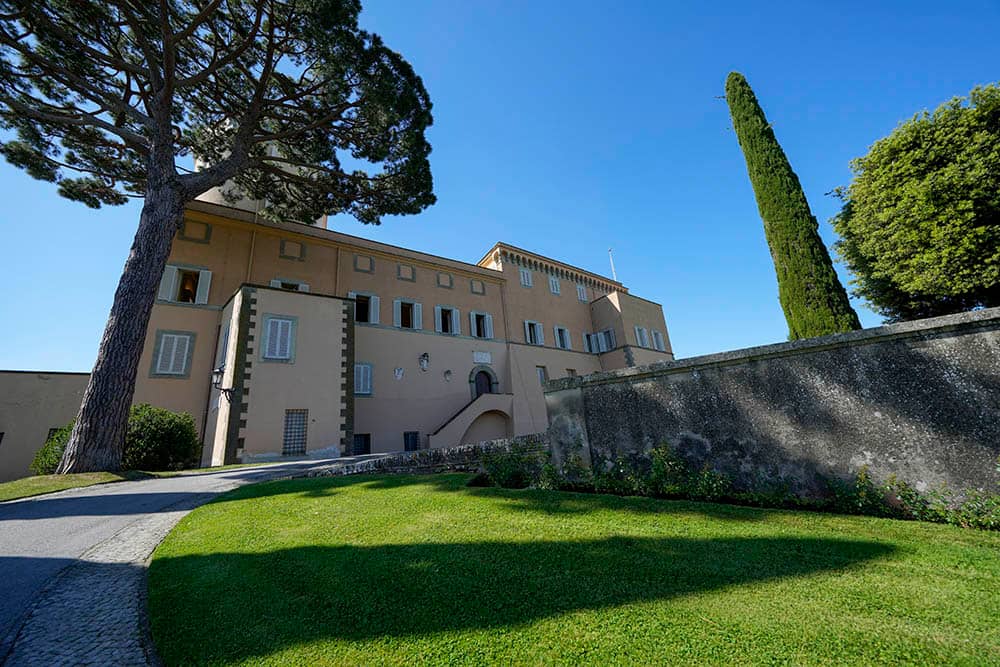From the outside, Italy’s often depicted as a bastion of Catholic culture and tradition, styled as “the pope’s backyard.” While practice of the faith is relatively healthy compared to most of the rest of Western Europe, there are also vast swaths of advanced secularism up and down il bel paese, and a young Italian growing up in that milieu often has no real contact with the Church at all.
One place you often find such youth are at Italy’s public universities, and back in the 1980s and ’90s, a young Italian priest made a name for himself by bringing large numbers of those thoroughly secularized young people into the faith at Rome’s sprawling Tor Vergata University, with a total enrollment north of 30,000.
“Don” Giacomo Tantardini — which is what Italians call priests, although he was just “Tantarda” to the students — was an early disciple of Don Luigi Giussani, founder of the Communion and Liberation movement. The heart of Giussani’s vision was the centrality of an “encounter” with Christ, and Tantardini had great luck translating that for alienated young people who thought the Church was all about ritual, wealth and power.
Eventually Tantardini, who died in 2012, would become the spiritual guide of the Italian Catholic magazine 30 Giorni (“30 Days”), published by the legendary Italian politician Giulio Andreotti, who was Italy’s Foreign Minister during the 1980s and then Prime Minister from 1989 to 1992.
(Andreotti was sometimes called “the Sphinx” for his political inscrutability, but one thing that was always completely transparent was his strong Catholic faith. He attended Mass every day at 7:00 a.m., and afterwards, he would be greeted at the door of his Rome church by a throng of beggars to whom he gave money. He knew them all by name.)
As Tantardini ministered to the youth he helped to convert, he realized the vast majority had absolutely no background in religious practice at all, so in 2001 he decided to put together a brief collection of the simplest Christian prayers along with everything somebody needs to know to make a good confession. The result, Chi prega si salva (“Who Prays is Saved”), went on to become the Italian equivalent of Chicken Soup for the Soul – one of the most popular brief spiritual books ever published, though in Tantardini’s case arguably with greater substance.
One admirer of Tantardini and his book was Pope emeritus Benedict XVI, who wrote a preface for a new edition of Chi prega si salva in early 2005, shortly before his election to the papacy. Benedict is actually a big fan of the ciellini, as members of Communion and Liberation are known – he celebrated Giussani’s funeral Mass, and members of a related group of consecrated lay women, Memores Domini, nicknamed the German pontiff’s “guardian angels,” still run his household.
Another big admirer of Tantardini is Pope Francis, who considered him a close friend in Rome when the future pope was the archbishop and cardinal of Buenos Aires. For his part, Tantardini told friends he was carrying Cardinal Jorge Mario Bergoglio of Argentina “in his heart” as his candidate for pope in 2005. When Tantardini was ailing before he died in 2012, Bergoglio performed a confirmation Mass as a favor and urged everyone to pray for his good friend.
Now Francis has added his voice to the chorus of praise for the latest edition of Tantardini’s little book, penning a preface for a new edition. The preface is dated March 28 but was published Tuesday by L’Osservatore Romano, the Vatican newspaper. It will be printed together with Benedict’s earlier reflection.
Francis is famously passionate about the sacrament of confession, and most of his preface is devoted to it.
“Shame is a grace that compels us to ask forgiveness, just like the gift of tears is a grace, because they wash our eyes and help us see reality better,” Francis wrote.
Francis hailed Tantardini for his “child-like heart and his prayer, because he knew it’s the Lord who takes the initiative and we can’t do anything without Him.”
The pontiff also couldn’t avoid throwing in some practical advice for confessing.
“In the confessional, we have to be concrete in the accusation of sins, without any reticence,” he said. “After that, we’ll see that it’s the Lord Himself who shuts our mouths, as if to say to us: ‘That’s enough!’ For Him, it’s enough to see our sadness, he doesn’t want to torture your soul, he wants to embrace it. He wants your joy.”
“Jesus came to save us just as we are: Poor sinners who ask to be sought after, found, taken in his arms and carried by Him,” Francis wrote.
As a footnote to the double-barreled papal endorsements, it’s worth recalling that in the court of popular opinion, Benedict and Francis are often styled as representing different options for the Church.
For sure, there are contrasts at what one might call the level of ecclesiastical policy: Francis is inclined to give control over liturgical translation to local bishops’ conferences, while Benedict had it in Rome; Francis has signaled a “yellow light” for communion for divorced and civilly remarried Catholics, while under Benedict it was a solid “red.”
Yet, if asked, both men undoubtedly would say that those questions, while important, aren’t the heart of the matter. Instead, they’d say, it lies in one’s relationship with Christ, expressed in prayer – and at that level, both clearly see in Tantardini a reliable guide.
All of which is perhaps a reminder that today’s tensions in the Catholic Church, while undeniable and pressing, often don’t quite cut to the core – and, inside that core, Benedict and Francis often seem far more profoundly united than anyone may really understand.
















